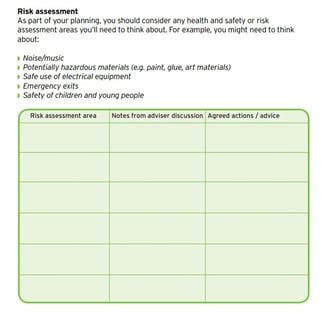
Building up with Bronze, Silver & Gold templates
BY: Alan Lynch
14 Aug 2017
This week, we’re highlighting some updated resources! These templates are designed to guide young people through each part of Bronze, Silver and Gold with prompts and suggestions that, if used effectively, can help them develop personalised portfolios. Our portfolio building templates are a useful way of signposting evidence requirements without putting the focus on ticking boxes. We’ve focused on key areas in each part, encouraging young people to consider their approach and respond with ideas they can build upon.
These are beneficial for advisers as well. Young people don’t have your toolkit or experience, so you can use the templates as a way of introducing each part and encouraging independent work. We’ve included our own suggestions – such as ways of gathering feedback, or recording evidence of attending events – which can be used by young people as they are. But they can also be used as inspiration for young people to spin off into their own approach!
So what can you expect, and where can you find these lovely new templates?
Bronze
Our Bronze templates break Part A into planning and review, a process which can be repeated for any activities young people participate in. Splitting the participation up like this encourages consideration of strengths and weaknesses at the planning stage, which can be reviewed later once they have developed their skills. We also provide a feedback form for participants in the Part D skill share. While feedback from others isn’t a requirement, it often helps young people reflect on how their sharing went, it also prepares them for that being a requirement in Silver and Gold Unit 2 if they plan to progress through the levels.
Silver
Silver templates are available for Unit 1 and Unit 2. Unit 1 has three templates focused on the arts challenge: planning, delivery and review. Planning is something that we see missed from portfolios occasionally, but the action plan is a key element of the whole challenge. Also included is a detailed checklist of suggestions for young people to find out about arts practitioners and organisations.
For Unit 2, we’ve produced templates for all five parts. Leadership projects can be challenging to evidence as there’s a natural crossover between parts, so these help ensure that young people include details of their work throughout the project. This obviously benefits advisers as well, as it helps you identify which part the evidence goes with!
Gold
Unit 1 splits Part A as well, with a planning template making sure to capture both the main and new art form. There’s also a review sheet for any arts events attended for Part C, and for Part D young people have room to explore questions around their chosen arts issue before presenting their argument in full.
Gold’s Unit 2 leadership templates have similar benefits to those for Silver. One of these, Part C, can be used more than once at regular points throughout the project. This encourages young people to reflect on how their leadership skills have progressed, which may be missed when activity occurs naturally during a project.
Something for everyone
Remember: templates can and should be built upon! Simply entering something into each box won’t necessarily guarantee success, so advisers still need to make sure that young people are on the right path. You may need to help someone complete a given template, or guide them to develop these initial responses into something in another format completely – for instance, using the templates as question scripts for audio or video evidence.  As always, the toolkit is your main resource.
As always, the toolkit is your main resource.
There are others available for advisers though! Visit www.artsaward.org.uk/mapping for activity mapping resources, which can help you match planned activity to different parts of each level. To see examples of the variety of ways that evidence can be presented, check out Evidencing Arts Award or Evidencing Achievement. Finally, we’ve got assessment criteria support and Bronze and Silver evidence checklists to help make sure that what does go into these templates is suitable.




Comments & Replies